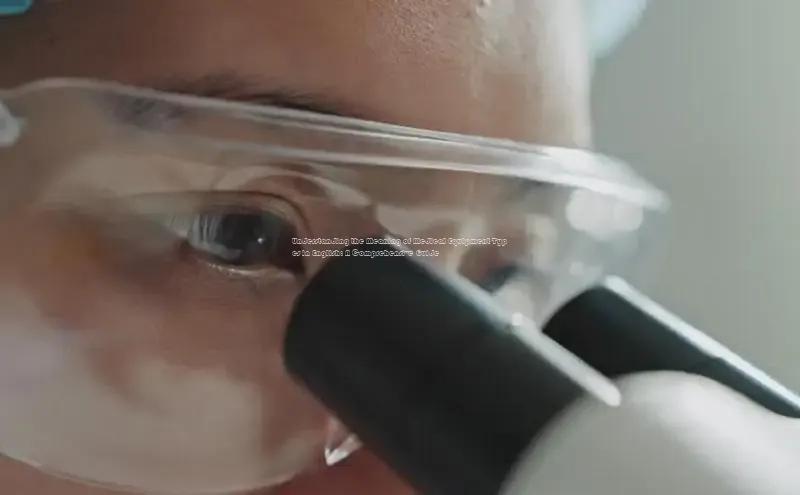
In the field of healthcare, medical equipment plays a crucial role in diagnosing, treating, and monitoring patients. However, for non-native English speakers or those new to the industry, understanding the meaning of different types of medical equipment in English can be challenging. This comprehensive guide aims to provide clarity on the various categories and functions of medical equipment commonly used in healthcare settings.
1. Diagnostic Equipment:
Diagnostic equipment is used to help healthcare professionals assess a patient's health condition accurately. This includes tools such as stethoscopes, otoscopes, and blood pressure monitors. Understanding how to use and interpret the results from these devices is essential for accurate diagnosis and treatment.
2. Therapeutic Equipment:
Therapeutic equipment is designed to aid in the treatment of various medical conditions. Examples include nebulizers for respiratory conditions, infusion pumps for administering medication, and physiotherapy equipment for rehabilitation purposes. Knowledge of how to operate and maintain therapeutic equipment is crucial for providing effective patient care.
3. Monitoring Equipment:
Monitoring equipment is used to track vital signs and other important health indicators in real-time. This includes devices like ECG machines, pulse oximeters, and blood glucose monitors. Healthcare professionals rely on these tools to monitor patients' conditions and make informed decisions regarding their treatment plans.
4. Surgical Equipment:
Surgical equipment is used during surgical procedures to perform precise operations. This category includes instruments such as scalpels, forceps, and retractors, as well as specialized equipment like surgical lasers and robotic surgical systems. Understanding the function and proper use of surgical equipment is essential for ensuring patient safety and successful surgical outcomes.
5. Imaging Equipment:
Imaging equipment is used to visualize internal structures and organs in the body for diagnostic purposes. Common types of imaging equipment include X-ray machines, MRI scanners, and ultrasound devices. Healthcare professionals rely on the images produced by these tools to accurately diagnose medical conditions and plan appropriate treatment strategies.
In conclusion, a thorough understanding of the different types of medical equipment is essential for healthcare professionals to deliver high-quality care to their patients. By familiarizing themselves with the categories and functions of diagnostic, therapeutic, monitoring, surgical, and imaging equipment, healthcare providers can enhance their clinical skills and provide the best possible outcomes for their patients.
By referring to this comprehensive guide, non-native English speakers and healthcare professionals new to the industry can improve their knowledge and proficiency in using and interpreting medical equipment terminology in English. Remember, effective communication and understanding of medical equipment types are vital for delivering optimal patient care in healthcare settings.

